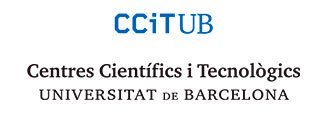
JEOL JXA 8230
The electron microprobe (electron probe microanalyzer, EPMA) is an instrument that allows performing quantitative chemical analyses of solid samples at the micrometer scale. With the electron microprobe the concentration of elements from B to U can be determined, with accuracies of the order of 2% and detection limits of hundreds of parts per million (ppm). It also allows obtaining line profiles and two-dimensional maps of concentration distribution. The electron microprobe uses a monoenergetic electron beam, which is focused onto the region of interest of the sample, and as a result of the electron-matter interaction characteristic X-rays are excited. X-ray intensities are recorded by using Wavelength-Dispersive Spectrometers (WDS) and are converted to concentration by using reference standards and correcting for matrix.
USES OF THE EQUIPMENT
- Determination of mineral chemistry and natural glass chemistry for the classification of rocks, identification of processes of alteration and genesis of mineral deposits, establishment of rock formation conditions (geobarometers, geothermometers).
- Identification and study of compositional variations of minerals, especially those associated with very slow diffusion processes. Analysis of fine intergrowths in minerals (e.g. small ex-solutions of lamellae) that reveal the thermal history and origin of the crystals.
- Determination of the composition of minerals and glasses obtained experimentally and its application to phase diagrams, calibration of thermodynamic models and determination of kinematic constants (e.g. diffusion coefficients).
- Determination of two-dimensional distribution maps to locate elements of economic interest or to understand the mechanisms and episodes of crystalline growth and dissolution .
- Study of micro-zonation in minerals such as zircon or monazite for dating applications.
- Identification of rare and/or new mineral phases, of strategic interest.
Study of vitreous microinclusions in rock-forming magmatic minerals (olivine, pyroxene, feldspars and quartz). - Study of vitreous matrices and/or inhomogeneous and/or zoned amorphous matrices and their application in studies of volcanic risk.
Characterization of microstructural and precipitated phases (micrometric scale) present in alloys, metals, steels, ceramics and advanced materials. - Characterization of metallic phases and carbides present in coatings obtained by thermal spraying
- Analysis of composition and thickness of thin layers and multilayers
- Characterization of laser and non-linear crystalline materials for photonic applications
- Study of aging of metal alloys (solid state reactions) and failure analysis (anticipated changes of the microstructure of a material)
TECHNICAL SPECIFICATIONS
JEOL JXA 8230, SN 1600001170117
- 5 WDS spectrometers:
- CH1: FCS type, 4 crystals: TAP, PETJ, LDE1, LDE2, gas flow proportional counter
- CH2: type XCE, 2 crystals: PETJ, TAP, gas flow proportional counter
- CH3: type H, 2 crystals: TAPH, LDE5H, proportional gas flow meter
- CH4: type H, 2 crystals: LiFH, PETH, Xe proportional counter sealing
- CH5: L type, 2 crystals: LiFL, PETL, Xe flow proportional counter sealing
- 1 EDS spectrometer of SDD type, UTW window with variable aperture
- 1 plasma cleaner EVACTRON coupled to the pre-chamber.
- 1 LNT liquid nitrogen anti-contaminaion trap system
- 1 Optical microscope with transmitted light



